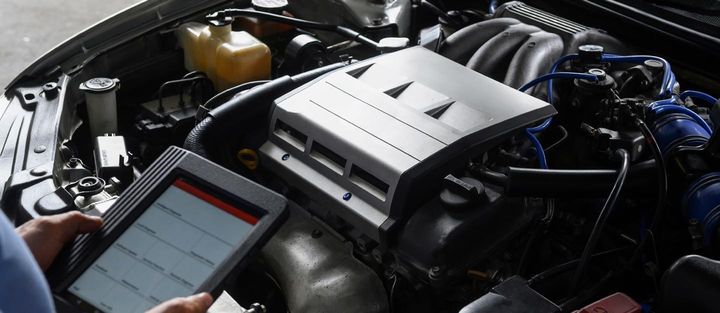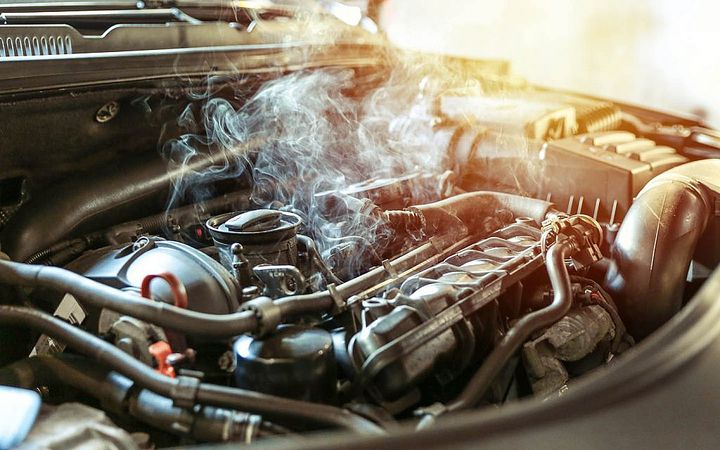


The open loop fault is a frustrating issue that can significantly impact your vehicle's performance, fuel efficiency, and emissions. When the engine control unit (ECU) detects a problem with one or more sensors, it enters open loop mode, relying on pre-programmed values instead of real-time data. This comprehensive guide will help you understand the causes, effects, and provide step-by-step instructions to diagnose and repair this vexing issue, restoring your vehicle to optimal operating condition.

The open loop fault occurs when the ECU detects a discrepancy or failure in one or more sensors responsible for monitoring the engine's operation. In this mode, the ECU can no longer make real-time adjustments based on sensor data, leading to reduced performance, decreased fuel efficiency, and increased emissions.
| Closed Loop Operation | Open Loop Operation |
|---|---|
| Uses real-time sensor data | Uses pre-programmed values |
| Allows for adjustments | Limited adjustments |
| Optimal performance | Reduced performance |
| Efficient fuel consumption | Decreased fuel efficiency |
| Low emissions | Increased emissions |

Several factors can contribute to an open loop fault, including:
Failed oxygen sensors
Exhaust leaks
Vacuum leaks
Engine misfires
Oxygen sensors play a crucial role in monitoring the air-fuel mixture. A faulty sensor can cause the ECU to receive inaccurate data, triggering an open loop fault.
Common symptoms:
Reduced fuel economy
Rough idling or stalling
Hesitation or lack of power
Increased emissions
Exhaust leaks allow unmetered air to enter the exhaust system, skewing the readings from the oxygen sensors.
Signs of exhaust leaks:
Unusual noises (hissing, tapping)
Visible cracks or holes in the exhaust system
Damaged gaskets or loose connections
Vacuum leaks disrupt the air-fuel mixture by allowing unmetered air to enter the engine.
Symptoms of vacuum leaks:
Rough idling or stalling
Decreased fuel efficiency
Engine hesitation or lack of power
Misfires disrupt the normal combustion process and skew sensor readings, causing the ECU to enter open loop mode.
Indicators of misfires:
Misfire codes and freeze frame data
Faulty spark plugs, wires, or ignition components
Accurately diagnosing the root cause is crucial for effective repair. This process involves:
Reading diagnostic trouble codes (DTCs)
Analyzing freeze frame data
Checking sensor readings and fuel trim values
Isolating the failed component
Once the root cause has been identified, the appropriate repairs can be made:
| Cause | Repair |
|---|---|
| Failed oxygen sensors | Replace the faulty sensor(s) |
| Exhaust leaks | Replace gaskets, tighten connections |
| Vacuum leaks | Replace vacuum lines, seal leaks |
| Engine misfires | Replace spark plugs, repair wiring |
For large aftermarket camshafts, the misfire monitoring system may need to be disabled or recalibrated using tuning software like HP Tuners.
After completing the repairs, follow these steps to ensure the open loop fault has been resolved:
Clear diagnostic codes and freeze frame data
Monitor live sensor data for accuracy
Test drive and check for return to closed-loop operation
Confirm restored performance, fuel efficiency, and emissions
Resolving an open loop fault requires a systematic approach to diagnose and repair the underlying cause. By following the steps outlined in this guide, you can effectively identify and address the issue, restoring your vehicle to peak operating condition. Regular maintenance and monitoring of sensors and systems are key to preventing future open loop events.
Reduced fuel economy, rough idling or stalling, hesitation or lack of power, and increased emissions are the most common symptoms of an open loop fault.
You can diagnose the root cause by reading diagnostic trouble codes, analyzing freeze frame data, checking sensor readings and fuel trim values, and isolating the failed component.
If a failed oxygen sensor is causing the open loop fault, the repair typically involves replacing the faulty oxygen sensor(s).
To verify a successful repair, you should clear diagnostic codes and freeze frame data, monitor live sensor data for accuracy, test drive and check for return to closed-loop operation, and confirm restored performance, fuel efficiency, and emissions.
Yes, vacuum leaks can disrupt the air-fuel mixture by allowing unmetered air to enter the engine, causing the ECU to enter open loop mode.
Driving with an unresolved open loop fault can lead to continued reduced performance, decreased fuel efficiency, and increased emissions, potentially causing further damage to the vehicle.
Exhaust leaks allow unmetered air to enter the exhaust system, skewing the readings from the oxygen sensors and causing the ECU to enter open loop mode.
Yes, engine misfires can disrupt the normal combustion process and skew sensor readings, causing the ECU to enter open loop mode.
If the open loop fault persists after repairs, you should double-check the accuracy of your diagnosis, ensure all repairs were completed correctly, and consider seeking professional assistance if the issue remains unresolved.
Yes, regular maintenance and monitoring of sensors, exhaust systems, vacuum lines, and ignition components can help prevent open loop faults by addressing potential issues before they cause the ECU to enter open loop mode.

Miguel started tinkering with car radios as a teenager, fascinated by the intricate dance of wires and circuits. This passion led him to pursue a career as an automotive electrician. For the past 10 years, Miguel has tackled everything from flickering headlights to mysterious electrical gremlins. He thrives on troubleshooting electrical problems and enjoys sharing his knowledge to empower car owners to understand their vehicles better.



